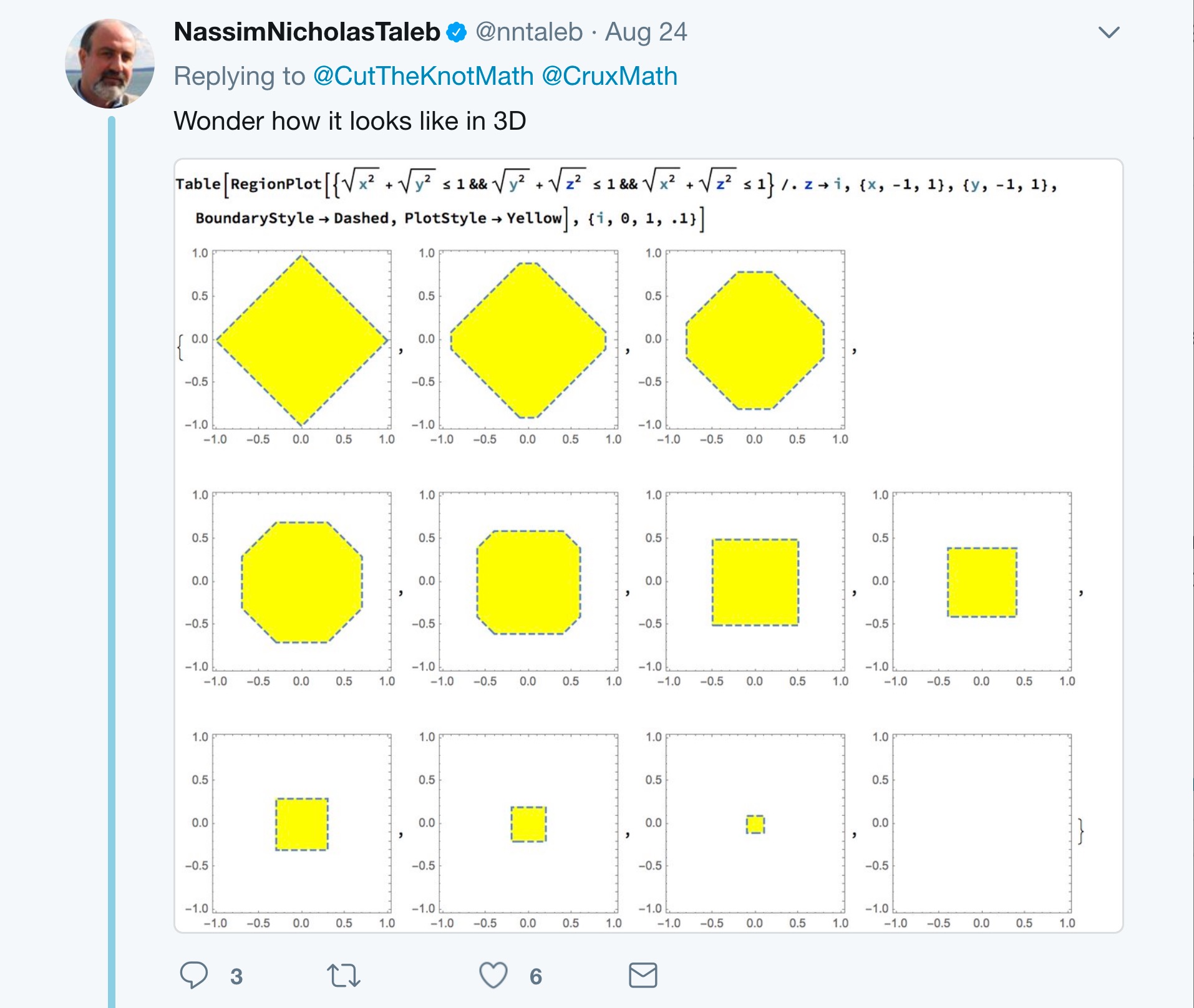This week I was doing a fun overview of higher dimensions with my younger son and we finished by playing around with the famous “central sphere” problem. The earliest reference I know to the problem is in Chapter 11 (“Spheres and Hyerspheres”) of Martin Gardner’s Collossal Book of Mathematics. There the problem is attributed to Leo Moser. I learned about the problem from hearing Bjorn Poonen discuss it with a student.
There are some nice youtube videos about the problem – this one by Kelsey Houston-Edwards is the one I watched with my son this week (the whole video is terrific, but I’m starting it around 6:15 when the discussion of the central sphere problem begins):
Grant Sanderson also has a video about the problem that I’m going to have my son watch later today:
I started the project last night by introducing the problem in 2 dimensions – just like both videos do. My younger son is in 9th grade and calculating the radius of the inner circle is a problem he was able to solve:
Next we moved to 3 dimensions and again my son was able to find the radius of the central sphere and also guess at the formula for the radius of the central sphere in any dimension:
Now we tackled two well-known questions:
(i) Is there a dimension where the radius of the central sphere is larger than the radius of the spheres in the smaller boxes?
(ii) Is there a dimension where the diameter of the central sphere is larger than the side length of the large box?
Finally, off camera we investigated the amazing question that as far as I know is due to Bjorn Poonen:
Is there a dimension where the volume of the central sphere is larger than the volume of the box?
We had to work in Mathematica and work with logarithms because some of the numbers in the calculations got so large. This video is a summary of what we found (and also several interruptions from our cat):
Definitely a fun problem – higher dimensions sure are strange 🙂












